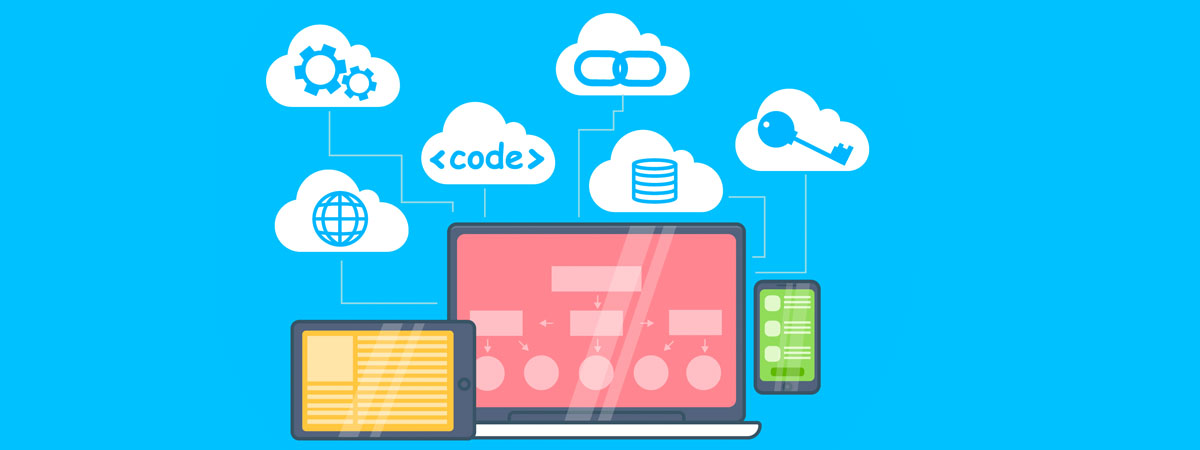Product Led Growth and SaaS
As long-time software developers, we’ve experienced the full gamut of software marketing methodologies. We’ve marketed software and had oodles of it marketed to us. We’ve built desktop applications, web applications, mobile applications, and most recently, many SaaS solutions. And yes, we’ve consumed all those too. Just as we espouse the many benefits of modern application development, cloud computing, agile practices, and CI/CD, we also recommend product led growth. If you’re building software or considering getting into the market, you should do some homework on both product led growth and SaaS. The two go hand in hand in this era, and we’ll explain why.
What Is Product Led Growth?
Product led growth is a marketing framework that breaks from traditional sales processes. Rather than sales teams guiding customers to software, the product itself is designed to drive adoption. It greatly simplifies customer acquisition, conversion, retention, and expansion. It’s also less expensive, opens the product to a wider audience, and has become a prominent model among major software success stories the past few years.
Product led growth eliminates the clunky installation and deployment practices of legacy software. Users are more willing than ever to switch products if their current option is under-delivering. In this new paradigm, buyers prefer to self-educate — they are growing accustomed to self-serve models where they can experiment the product without lengthy demos and sales meetings. Product experiences are now an essential part of the buying process, typically with ‘freemium’ offerings such as introductory, limited versions or free trial periods. For example, if you hear about a product from a colleague, blog post, or online review, you visit the vendor website. You read about it and discover they offer a free version. If you like it, you adopt it for yourself and share it with coworkers. At some stage, your entire organization upgrades to the paid version.
Using engaging product tours and smooth onboarding workflows, vendors can easily engage new customers, setting up upgrade programs that introduce more paid features over time. The longer a customer uses the system and more features she adopts, the stickier the product becomes.
What Are Examples of Product Led Growth?
We’ve already described some typical characteristics of product led solutions:
- Addresses a real need
- Offers a free trial
- Includes a smooth onboarding process (setup & “habit forming” workflow)
- Focuses on a helpful & engaging user experience
- Employs an upgrade “funnel” to tap into more features
- Taps a referral network (e.g., incentive program)
Thousands of successful software products fit this model. Giants like Dropbox, Evernote, and Stripe blazed this trail in the early years. More recent examples include blockbusters like Slack, Zoom, Trello, and Shopify.
What Are the Objectives of Product Led Growth?
A good product led growth framework entails a number of key objectives:
Design for the end user
First, the goal of the system is to enable self-service, so solving problems, easy setup, and simple interfaces are all essential.
Demonstrate value before capturing revenue
In addition, the whole point of freemium is “give to get”. If a solution proves its worth, it’s much easier to “sell”.
Engage current users to attract new ones
Whether by testimonials, incentives, or natural viral loops, the network effects are hugely beneficial for growth.
Use internal metrics to drive development
Modern software designs enable tracking how users engage the application. “Self reporting” what features and workflows are used facilitates improving and expanding capabilities.
Drive & support rapid growth
With a variety of marketing channels with viral loops, infrastructure must be elastic and quickly scalable.
What Are the Key Performance Metrics of Product Led Growth?
Metrics are ingrained in product led growth. Organizations benefit from shortened sales cycles, lower acquisition costs, and increased long-term revenue. Metrics that matter include, but are not limited to…
Growth rate
The name of the game in SaaS is growth, and especially with viral marketing, that rate needs to accelerate over time.
Average revenue per user
Many investors focus on ARPU as a measure of growth. Revenue is added when users upgrade or add services.
Company churn
“Logo churn” is the loss of organizations using the system. Retaining users is important, but it’s essential to retain the companies and expand the beachhead. The inverse calculation is logo retention…
CAC payback
Customer Acquisition Cost (CAC) is an integral part of the growth equation. Ensuring “speed to cool” (reaching the ‘aha’ moment with adoption, which some measure as Time to Value (TTV)) enables CAC payback.
LTV/CAC
The Lifetime Value (LTV) also reflects the success of a SaaS product. We referenced an application’s stickiness, which is measured as LTV. LTV should grow and (hopefully) CAC will decrease over time.
What Tools Can We Use?
A few tools we’ve seen work successfully…
Pendo helps you design customer journeys that accelerate time to value. It includes tools to improve adoption, increase stickiness, and accelerate growth.
Heap is an analytics solution made to help you tap into product led growth. It show how people interact with your website or product, so you can determine what’s working.
Amplitude is a leading product that enables identifying features and customer actions that lead to revenue, loyalty, and lifetime value.
MixPanel provides useful tools to help you learn learn which features are popular, who power users are, and which behaviors tie to long-term retention.
Product Led Growth and SaaS
“Traditional” sales-led companies lead a buyer through their sales cycle. As we have explained, product-led companies challenge that traditional sales model by giving the customer time to explore the product on their own. It helps the customer see the potential outcome of using the product. We love the idea of “land and expand” too, where the product itself becomes viral within an organization (or even outside it). We hope you now understand how product led marketing works and why businesses are opting to use it. Grow, baby, grow!


Leave A Comment